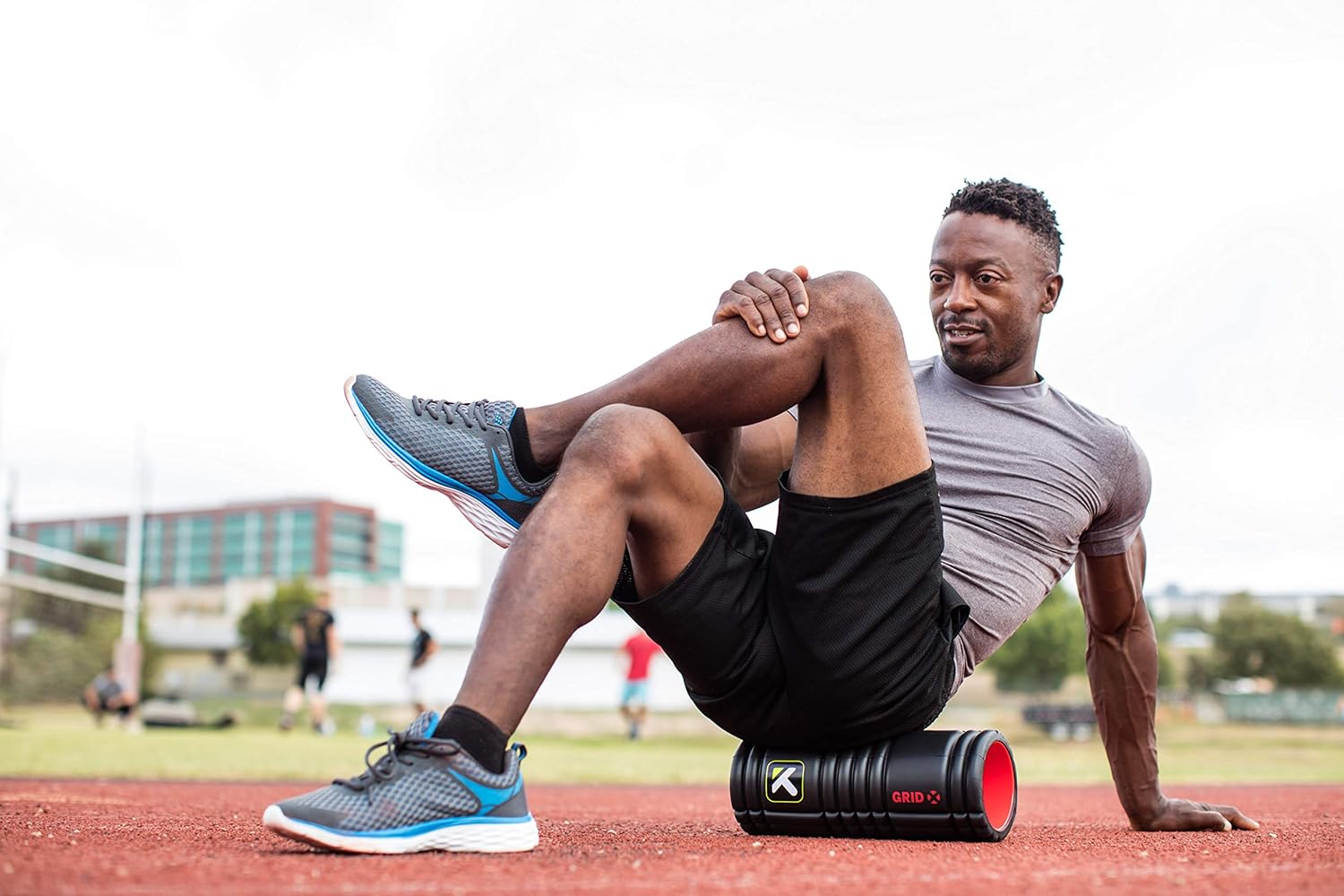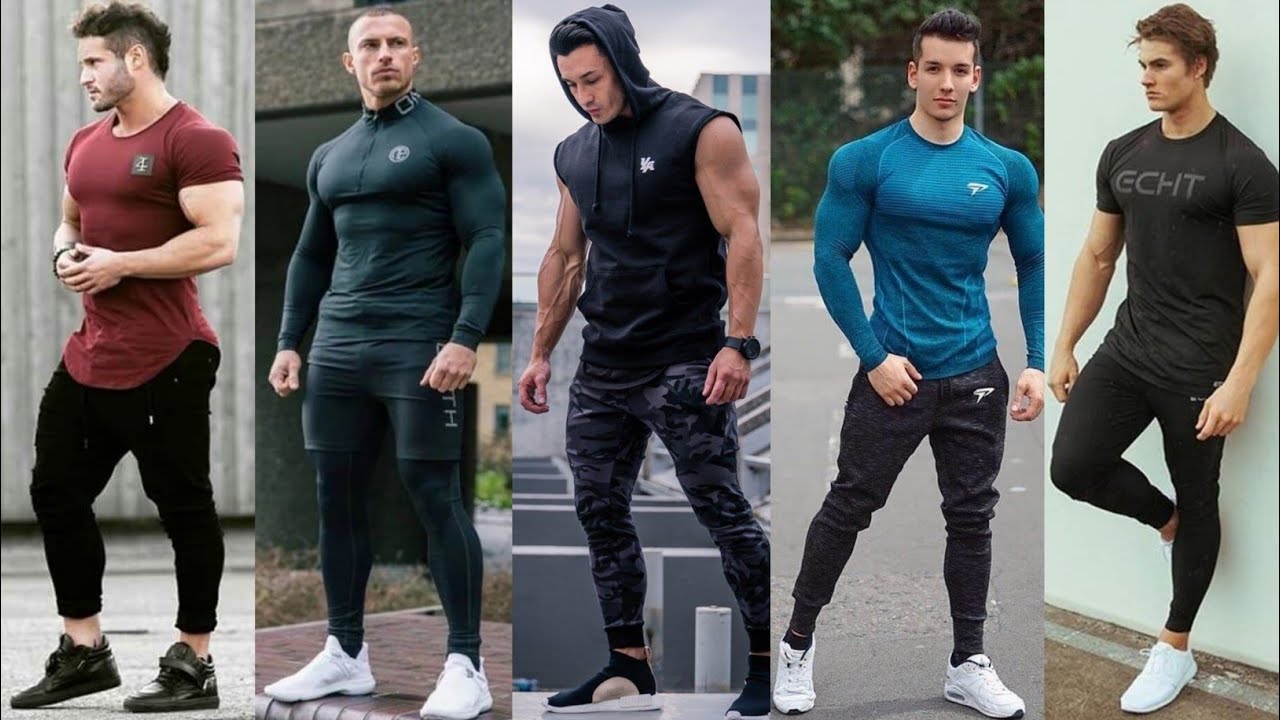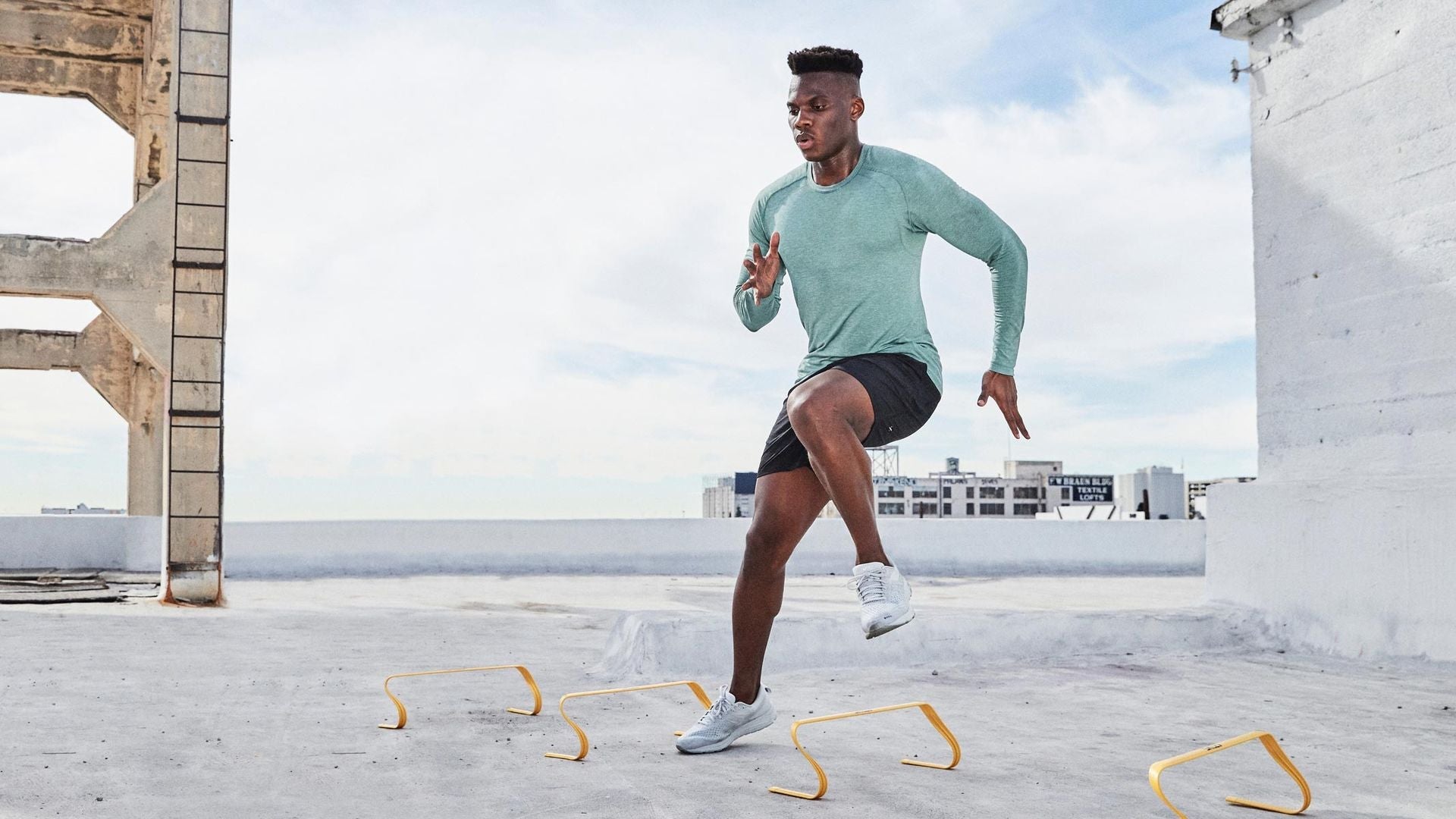Entering the gym in the wrong attire can influence more than your self-confidence — it can hinder your performance. Most men unknowingly wear apparel that hinders movement, heats up the body, or does not accentuate their natural physique. This manual reveals the 7 most frequent gym attire errors made by men and offers easy solutions to allow you to appear sharp and be comfortable. By choosing the top men's activewear and creating a wardrobe of items that blend functionality and fashion, you can eradicate distractions and concentrate on gains. With practical advice and tips drawn from the best men’s fitness apparel, this article ensures your choices support both your workouts and your lifestyle.
Ignoring Fit in Men's Activewear
When it comes to gym style, one of the most overlooked details is fit. Many men focus on color, fabric, or even price — but forget that the way clothes sit on the body makes all the difference. For short or athletic builds particularly, ill-fitting can be disastrous on both look and performance. Shirts that are too big may feel cozy, but they do tend to conceal your progress and make your frame appear less defined. Conversely, clothes that fit too closely limit flexibility, cut off blood flow, and actually cause skin irritation during strenuous sessions.
The true solution is to select men's activewear that achieves a perfect harmony — tight enough to showcase your efforts at the gym, yet comfortable enough to accommodate natural movement. By realizing the significance of fit, you not only become a better performer, but also more confident in and out of the gym.
Why Fit Matters More Than You Think
Fit is not solely a matter of looks — it has a direct impact on performance. Too-loose clothing can catch on gym equipment or hinder exercises such as deadlifts and squats. On the other hand, too-tight gear limits movement during compound lifts or dynamic exercises. Well-fitted clothing removes these distractions, allowing you to concentrate on your performance.

Key Fit Mistakes Men Make
These are the most frequent fit errors men experience when selecting workout apparel:
· Oversized tops: Conceals definition and presents a shorter, boxy silhouette.
· Oversized bottoms: Restricts hip and leg mobility when squatting, lunging, or jogging.
· Proportion indifference: Evenly cut standard sizes cannot accommodate muscle bulk, resulting in waist gaps or thigh tightness.
· Forgetting about sleeve length: Too-long sleeves make your arms appear shorter, and too-tight ones limit mobility.
· Accepting substandard fabric stretch: Certain fabrics shrink with repeated use, rendering once-worn garments unwearable.
How to Correct Fit Problems
Fixing these problems doesn’t require a complete wardrobe overhaul — just smarter choices. Look for cuts tailored to athletic builds, with tapered designs that enhance shape while allowing flexibility. Shorts with elastic waistbands and stretchable materials provide comfort for muscular thighs. Fitted tees that stop at the hip offer a clean look without bunching.
Investing in the Right Brands
One of the simplest approaches to preventing fit problems is by trying the top activewear brands for men. These companies create for actual athletes, providing shorter inseams, wider shoulders, and slimmer cuts that work with a muscular build. They create clothing using resilient fabrics that hold elasticity and shape through hundreds of washes, providing long-lasting performance
Wearing Non-Breathable Fabrics
One of the most universal errors that men make at the gym is using non-breathable clothing, particularly gear made heavily of cotton. Cotton might be soft and pleasant against your skin when you initially wear it, but before long it becomes an issue as your exercise session starts. Cotton absorbs and retains sweat rather than allowing it to evaporate, so you end up feeling sticky, hot, and heavy. This not only makes you uncomfortable but also impacts your performance by irritating your skin and making you move more slowly.
Today's performance apparel is constructed to prevent this same problem. Spending money on the best men's activewear is investing in shirts, shorts, and other garments constructed from breathable, moisture-wicking fabric that draws sweat away from your body. Such materials control temperature, dry fast, and leave you feeling light even when you're sweating the most.

Why Breathable Fabrics Are So Important
Breathability isn't just about remaining dry — it's about making every aspect of your workout better. When your gear controls airflow and evaporates moisture, your body stays at an even temperature. This lessens fatigue and lets you concentrate on training rather than the misery of sweat-drenched equipment. During colder temperatures, breathable layers assist further by keeping wetness from the skin, stopping you from getting chilly once your exercise is complete.
Problems with Cotton-Heavy Gear
Wearing non-breathable clothing creates a number of problems that can hold back your fitness progress:
· Overheating: Excess heat builds up, making endurance activities like running or cycling more challenging.
· Skin irritation: Wet fabrics cling to the skin, leading to rashes or discomfort during long sessions.
· Heaviness: Sweat-soaked clothes add extra weight, reducing mobility and slowing performance.
· Odor retention: Cotton tends to hold onto sweat odors, leaving clothes smelling unpleasant even after washing.
Choosing the Right Fabrics
The top men's workout apparel will typically contain mixes of synthetic fabrics such as polyester, nylon, or elastane. These are light, tough, and stretch with your body. Most also include mesh panels or ventilation zones in areas that get a lot of sweat, like the back, underarms, or thighs, maximizing airflow where you get the most sweat.
Search for equipment with moisture-wicking capabilities — this technology actually draws sweat from your body and disperses it across the surface of the clothing so that it can evaporate rapidly. The payoff? You remain cool, dry, and alert during your workout.
How to Upgrade Your Gym Wardrobe
If your wardrobe already depends so heavily on cotton tees or shorts, it's time to freshen up. Begin by changing out your staples — T-shirts, shorts, and base layers — for air-permeable alternatives. Use lightweight tops during cardio and strength training, and stretchy shorts that offer ventilation and stretch for ultimate flexibility. In the long run, creating a high-performance, air-permeable wardrobe will revolutionize your gym routine.
Forgetting Men's Activewear Shorts Are Important
When it comes to gym attire, most guys focus on shirts, hoodies, or footwear, and forget about one of the most significant elements: shorts. The reality is, your shorts can either be the best part of your exercise routine or the worst. It is generally okay to wear everyday street shorts, basketball shorts, or aged cotton patterns, but these come with secret issues — restricted freedom of movement, inadequate support, and the necessity of constant adjustment during training. This can easily divert your focus away from performance and even amplify the risk of injury.
Rather, developing your wardrobe using men's training shorts for men ensures that you're dressed for whatever workout you have ahead of you. Constructed with stretchy materials, elastic waistbands, and light construction, they offer the freedom and security you need to move freely.
Why Shorts Matter in Training
The incorrect pair of shorts can hurt your training more than you realize. Shorts that are too long or loose can bunch up at squats, while too-tight ones restrict flexibility in exercises such as lunges or deadlifts. Mens workout shorts on the other hand, which are performance-fit, balance comfort and movement to ensure you have proper form and concentration.
Key Features to Look For
When selecting training shorts, there are some key features to look for:
· Stretch Fabric: Four-way stretch fabric lets you bend, squat, and sprint without pulling or ripping.
· Secure Waistband: Elastic or drawstring waists avoid frequent adjustments during a workout.
· Breathability: Lightweight and quick-dry fabrics remain cool and dry during high-intensity sessions.
· Length: Shorts that sit just above the knee work best — long enough to offer coverage, but short enough not to restrict movement.
· Pockets & Storage: Streamlined or zippered pockets are perfect for holding the essentials without adding bulk.
Common Shorts Mistakes
Most men opt for regular casual shorts for the gym because they're easy. But such a selection usually leads to:
• Constricted leg movement during leg exercises.
• Chafing and irritation brought about by cotton-dominant fabrics.
• Excess material getting in the way during lifts or cardio workout.
• Limited durability, with regular casual shorts becoming worn out very quickly under continued stress.
How the Right Shorts Enhance Performance
Switching to purpose-built training shorts offers immediate benefits. Better stretch means deeper squats and cleaner form. Moisture-wicking fabrics ensure you stay dry, even during high-intensity intervals. Secure waistbands keep everything in place so you can concentrate on performance, not on tugging at your gear. And because men’s activewear shorts are designed with mobility in mind, they support everything from weightlifting to running, yoga, or functional training.
Building Your Wardrobe
If you’ve been training in everyday shorts, consider upgrading step by step. Start by replacing your most frequently used pair with mens workout shorts that fit your build and workout style. Over time, create a rotation that covers different needs — lightweight options for cardio, thicker shorts for heavy lifting, and versatile designs for casual wear.
Forgetting Versatility in Wardrobe Choices
A further mistake men often fall into when constructing their fitness wardrobe is neglecting versatility. Too frequently, men buy clothing that is strictly for workout purposes. Nowhere is the problem with that. The best strategy, however, is to invest in clothing that performs well in various settings. It saves you money, keeps your closet uncluttered, and always has you dressed to impress — whether you're working out at the gym, going out for coffee, or picking up groceries.

The best men’s fitness apparel is designed with this versatility in mind. High-performance fabrics, clean cuts, and athletic tailoring make it possible to wear the same items during training and in casual settings without looking out of place. A well-chosen hoodie, tapered joggers, or fitted tee can transition seamlessly from a lifting session to a night out, proving that functional clothing can also be fashionable.
Why Versatility Matters
Creating a do-it-all wardrobe is not just about practicality. It's about getting the most value out of your wardrobe and having personal style. Some of the most important advantages of multi-use equipment include:
• Economy: Rather than investing in different outfits for exercise and recreation, one item can do it all.
• Boosting confidence: Sleek, flattering cuts make you presentable anywhere.
• Convenience: You don't need to change after exercising to hang out with friends or run errands.
• Sustainability: Less stuff that does more minimizes waste and overuse.
Mistakes Men Make
The principal problem is purchasing apparel that looks fantastic in the gym but clumsy elsewhere. Hyper-bright colors, excessively baggy cuts, or cumbersome cotton equipment frequently miss the mark in relaxed settings. Conversely, applying everyday streetwear to exercise may restrict performance since these items can't match the flexibility and ventilation of authentic athletic attire.
Smarter Wardrobe Choices
To tackle this, rank men's activewear target picks that combine functionality and fashion. Consider joggers with tapered ankles, clean-colored tees in moisture-wicking materials, or light jackets that complement denim jeans. All these pieces have a fantastic aesthetic in casual settings yet provide the technical support required for training.
Key Pieces to Add Versatility
To create a versatile wardrobe, begin with these staples:
• Neutral-colored tees: Fitting yet airy, ideal for workouts and casual use.
• Tapered joggers: Trendy enough for errands but stretchy enough for squats and lunges.
• Lightweight hoodies or jackets: Ideal for layering pre- or post-training, yet stylish enough for casual runs.
• All-purpose shorts: Made with stretch and ventilation, yet plain enough to go casual.
Forgetting Durability
Perhaps the most frequent blunder men make when selecting gym clothing is forgetting about durability. On first impression, any old pair of shorts or plain t-shirt can be used, but low-cost materials hardly survive the rigors of regular training. Heavy exercise, stretching, and repeated washing loads huge stresses on garments. Lacking proper building, seams are torn, materials degenerate in elasticity, and dyes are faded. What appeared sharp at the beginning soon becomes machinery that feels sloppy and worn.
Durability must always be at the top of your mind when you're constructing your fitness wardrobe. Top-notch men's activewear isn't just all about performance and comfort — it's also all about longevity. Opting for pieces that hold shape and structure over time guarantees you get the most bang for your buck while remaining sleek every time you head to the gym.
Why Durability Matters
Investing in better-quality equipment pays you back by saving you time, money, and aggravation. Here's why durability should never be ignored:
• Cost savings: Replacing low-quality clothing every few months costs more over time than investing in more durable gear.
• Consistent fit: Durable fabrics retain their stretch and cut, so your clothes continue to fit like new even after months of heavy use.
• Professional look: A well-maintained wardrobe gives you confidence and makes you appear serious about training.
• Less waste: Purchasing items that last longer is more eco-friendly.
Indications of Flimsy Clothing
Before purchasing, there are signs that the item will not last. These include:
• Thin material: Fabric that is soft and thin is apt to tear or lose form.
• Loose thread: Poorly stitched seams rip under stress or heavy use.
• Low-quality elastics: Waistbands or cuffs that lose elasticity fast lead to sagging.
• Color fading: Poor-quality dyes run after a few washes, making gear look lackluster.
These red flags indicate the product won't hold up, regardless of how trendy or budget-friendly it looks.
The Smarter Choice
Skip these traps and shop with the top activewear brands for men that prioritize craftsmanship and detail. Quality choices tend to include features such as:
• Reinforced seams: Stop it from tearing when performing stretching exercises like squats or push-ups.
• Moisture-resistant coatings: Resist odor and sweat damage.
• Shape-retention materials: Prevent gear from sagging or losing shape with frequent use.
• Fade-resistant coloring: Maintain clothes' sharp, vibrant appearance even after repeated washing.
These minor details go a long way towards making your activewear last longer and perform better.
Practical Tips for Long-Lasting Gear
Durability doesn’t stop at purchase — maintenance plays a big role too. Follow these simple practices to extend the life of your gym clothing:
• Wash in cold water: Hot water breaks down elastic fibers faster.
• Air dry when possible: High heat from dryers can cause shrinkage and fading.
• Avoid fabric softeners: These coat fibers and reduce moisture-wicking ability.
• Rotate your gear: Wearing the same pieces daily accelerates wear and tear.
• Store properly: Have clothes stored in dry, cool places in order to avoid damage.
Selecting the Wrong Length in Short and Tops
For gym wear, length is probably the most neglected aspect. For men with athletic or muscular physique, dressing with clothes that are too long or too short can unbalance proportions and influence self-confidence. A shirt that extends below the hips shortens your torso, whereas baggy shorts sag and produce excess bulk in the legs. Alternatively, tops or shorts that are too tight constrict motion and cause discomfort when training. Getting the correct length is about more than looks — it's about balance, fit, and performance.
The secret is to choose men's activewear shorts and tops that enhance your figure without restricting movement. Shorts that cut off at mid-thigh offer liberty of movement without appearing unkempt, while fitted shirts that cut off just at the hip make the torso appear longer and add symmetry. Apparel that encircles your physique properly not only is more aesthetically pleasing but also helps maintain your natural posture and athletic stance.
Why Length Matters for Proportions
Athletic guys tend to have wider shoulders, larger arms, and thicker thighs than the average body type. Typical clothing sizes don't necessarily take these proportions into consideration, so ill-fitting equipment is the norm. The incorrect length can:
• Make you appear shorter: Baggy or long tops make your torso appear shorter.
• Add unneeded bulk: Baggy shorts or long shorts add bulk.
• Distract during training: Ongoing changes of roll up sleeves or shorts distract from performance.
• Hide progress: Overweight clothing hides muscle definition, depriving you of the confidence that comes from visible results.
Properly selected lengths, however, provide you with a streamlined appearance and compliment your body's natural contours.
Choosing the Right Shorts
Shorts are a staple for the gym, but not all styles are created equal. Men often err by wearing basketball shorts that graze the knee. Comfortable outside the gym, they're inconvenient in one and cause legs to look shorter. Opt for mens workout shorts that hit mid-thigh instead.
Seek out:
• Tapered styles: These hug the natural contour of your leg without fitting too tightly.
• Flexible fabrics: Allow a full range of motion for squats, lunges, or cardio.
• Secure waistbands: Avoid slipping or continuous adjustments while moving.
This blend offers a sleek appearance alongside optimum performance.
Getting Tops Right
The same rule can be applied to tops. T-shirts or tanks that are too long cover your waistline and make your overall body look shorter. Fitted tees that reach the hip, however, create a proportionate silhouette by extending the torso.
Key tips for tops:
• Opt for tapered fits: Wider at shoulders, slightly narrower at the waist.
• Hip-length cut: Adds proportion without added bulk.
• Flexible fabrics: Support natural movement without sticking too closely.

Focusing on Style Rather Than Performance
It's only normal to desire to feel good at the gym. Because after all, confidence starts where you're dressed. However, one of the most usual mistakes men commit is prioritizing style over functionality. A wardrobe that's stylish but doesn't accommodate movement, disperse heat, or endure rigorous sessions turns into more of a disservice than an asset. Workout attire should enable your training, not merely dress you for the mirror.
The answer is balance. Choosing items from the top activewear men's brands means you don't have to compromise on function for fashion. These pieces are made with performance in mind — sweat-wicking materials, stretch panels, and ergonomic seams — but still provide streamlined, contemporary style. If selected thoughtfully, your gear can do both: inspire confidence in style and dependability in training.
Why Performance Comes First
Style is fleeting if the gear doesn't work. Think about that fashionable top that is perfect but retains sweat, making you sweat a lot after ten minutes on the treadmill. Or sweatpants that are narrow but inhibit stride during lunge. Such problems not only break the comfort seal but are also likely to impact training outcomes. Training apparel-focused clothing removes such hindrances by providing your body with the support it requires to be mobile, breathable, and long-lasting.
Key Features to Seek Out
When you construct a wardrobe, focus on features that make your training efficient without sacrificing style. Some of the most critical are:
• Moisture-wicking material: Inhibit sweat accumulation and stay cool.
• Four-way stretch material: Permit freedom of movement with no resistance.
• Breathability panels: Enhance air exchange during extended sessions.
• Durable construction: Reinforced seams that resist repeated washing.
These function-based details guarantee your equipment enhances, not limits, your training.
Balancing Fashion and Function
Gym-goers too frequently get caught up in picking the too-trendy items that don't hold up to workouts. But pieces from top men's fitness collections demonstrate you don't have to sacrifice style for substance. Such designs merge fitted silhouettes and chic cuts with technology-driven fabrics that perform and last. And because this is a two-for-one strategy, you can stride into the gym room with confidence knowing that your clothing can keep up with every squat, sprint, or press.
A smart approach is to construct your core wardrobe on performance essentials — fitted tees, versatile shorts, and heavy-duty joggers — and layer fashionable additions such as lightweight jackets or tapered hoodies. This way, your core is functional, and your outerwear adds the style you desire.
How to Fix These Mistakes
The good news is that all gym wear errors have easy solutions — it's all about making smarter choices. Begin with men's activewear that hugs your physique, weighing tight cuts against maximum mobility. For fabrics, avoid bulky cotton and opt for moisture-wicking fabrics that are dry and comfortable during any exercise. Shorts are another important area — replace baggy or relaxed-fit pairs with mens workout shorts with mid-thigh lengths, tapered fits, and airy panels that facilitate movement.
Creating versatility in your wardrobe is just as crucial. Choose items that are suitable both for the gym and for everyday use, like fitted shirts or tapered joggers. To maximize the lifespan of your clothes, buy long-lasting products from the top men's activewear ranges, and look after them by washing them in cold water and drying them in the air.
Lastly, keep in mind that functionality should always precede style. The most stylish ensemble does not count if it hinders your training. Selecting the top activewear brands for men guarantees that you attain the appropriate balance of confidence, comfort, and usability.
References
1. American Council on Exercise (ACE). Guidelines on Exercise Clothing and Performance. ACE Publications, 2022.
2. Journal of Sports Science & Medicine. The Effect of Clothing Fit and Fabric on Exercise Comfort and Mobility. Vol. 21, No. 3, 2021.
3. International Journal of Sports Physiology & Performance. Impact of Moisture-Wicking Fabrics on Thermoregulation During Physical Activity. 2020.
4. Sports Medicine Research Institute. The Role of Breathable and Stretchable Materials in Athletic Wear. University Publication, 2019.
5. Strength & Conditioning Journal. Practical Considerations for Gym Apparel Selection and Its Effect on Training Outcomes. 2021.
6. Journal of Applied Ergonomics. Clothing Design, Fit, and Its Relationship to Athletic Movement Efficiency. 2020.
7. National Strength and Conditioning Association (NSCA). Apparel Choices for Optimized Training Performance. Position Stand, 2022.




Leave a comment
This site is protected by hCaptcha and the hCaptcha Privacy Policy and Terms of Service apply.